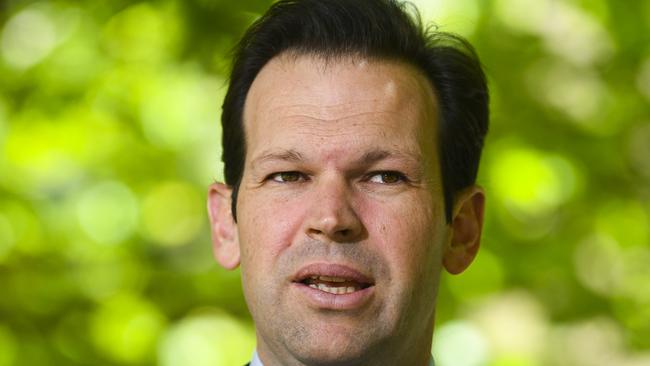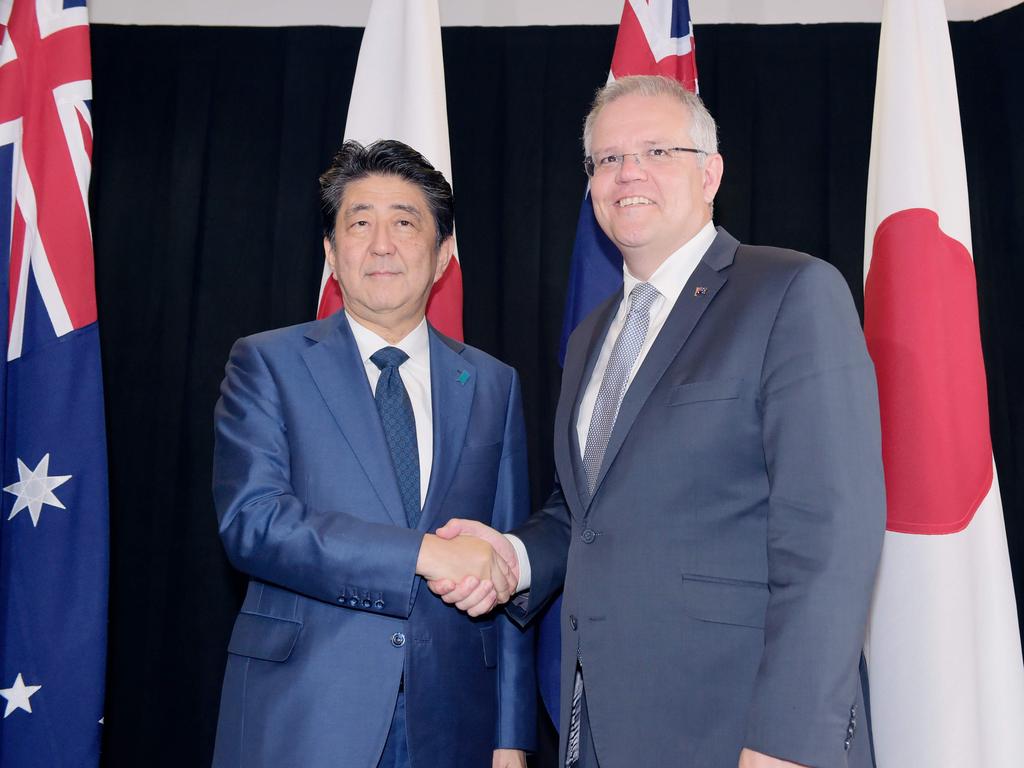Morrison government to pursue closer ties with India, Southeast Asia and Pacific Island nations
The Morrison government will pursue closer ties with India, Southeast Asia and the Pacific Island nations amid tensions with China.

The Morrison government will overhaul its northern development agenda to pursue closer ties with India, Southeast Asia and the Pacific Island nations, as “strategic priorities” and increasing international volatility call for less reliance on China.
Northern Australia Minister Matt Canavan said the government’s 20-year plan for the nation’s underpopulated frontier must evolve to cope with trade tensions and security challenges that were not envisaged when it was developed five years ago.
Senator Canavan said the new and less politically stable environment mandated greater co-operation with states closer to home and “more diverse” sources of capital to avoid hitching “our star to one country” and elevating risk.
“We should look a bit harder at how we can link northern Australia to our non-traditional economic partners such as emerging India, the broader Southeast Asian region and the Pacific Islands as well,” he said.
“China will continue to be a very strong investor in northern Australia, but there is no doubt that over the past few years we have strengthened our foreign investment review regime because we are fully aware of the need to take account of our strategic priorities, which sometimes don’t accord with those of other nations.”
The Coalition’s 200-page northern Australia white paper, released in June 2015 and entitled Our North, Our Future, spruiked the “tremendous opportunities” to be found in China’s capital markets and through regional economic integration.
Four months later, the Northern Territory government ignited an international controversy by leasing Darwin Port to a Chinese company with alleged links to the communist government.
Although Canberra swiftly tightened foreign investment rules around similar transactions, the lease angered the US, and Chinese media have taken to describing Darwin Port as part of Chinese leader Xi Jinping’s muscular Belt and Road Initiative.
China has also strengthened its grip on the South China Sea and become embroiled in a costly trade war with the US.
Senator Canavan said the government would continue to welcome Chinese investment “in areas that can continue to be of strategic co-ordination between our nations’’.
“I don’t think that there will be a limit or a brake on capital available to develop northern Australia, given the economic opportunities, but I do think that it makes sense to look for a diverse range of capital to come and invest in northern Australia,” Senator Canavan said.
“We shouldn’t hitch our star to one country because that elevates risk, not just from a political perspective but from an economic one, too.”
He highlighted the government’s renewed interest in emerging power India, and revealed he was “pushing” to explore opportunities to expand trade in agricultural commodities due to the two nations’ similar but counter-cyclic climates.
Senator Canavan said the Indian investment in Queensland’s controversial Adani project could help facilitate further capital flows into the energy sector.
“According to the International Energy Agency, India and Southeast Asia will account for more of the growth in demand for Australian resource commodities than any other region, including China,” he said.
“It is essential that we establish strong trade links quickly so we are in the box seat to take advantage of this growth. That is why the Adani investment is so important. It is a springboard to attract other investments.”
Scott Morrison was forced to cancel a high-profile trip to India scheduled for this month, amid an uproar over his handling of the bushfire crisis.
Australia’s coal exports had been expected to feature heavily in that trip.
Senator Canavan said the economic case for developing northern Australia had a newly strengthened national security dimension in light of worsening political conditions beyond Australia’s northern border.
The overhaul of northern Australia policy was discussed with state and territory leaders at a ministerial forum in Katherine last month. Senator Canavan said a refresh of northern Australia policy would likely have been needed without changes in Australia’s strategic environment but that made this year’s overhaul all the more important.
“Five years ago, we had just signed free-trade agreements with China, Korea and Japan,’’ Senator Canavan said of the northern Australia white paper released in 2015.
“We had experienced by then a decade of effectively secular increases in commodity demand from Chinese economic growth, both in our soft and hard commodities, and there was an expectation that growth would continue almost unabated for much more time to come,” he said.
“Since that time, there have been big changes around things like the South China Sea but also in international relations between the United States and China, and that more volatile environment is a totally different playing field than what we had five years ago.”
The changes, to be developed this year and in partnership with state and territory governments, will also examine problems with indigenous economic development, infrastructure and population growth and occur in parallel with reviews of environmental laws, taxation and resources regulation.
Peter Jennings, executive director of the Australian Strategic Policy Institute, welcomed the overhaul as an overdue recognition of the strategic importance of Australia’s north.
“The only group of people that tends to underplay the significance of the north is policymakers in Canberra,” Mr Jennings said. “There’s still, frankly, a troubling perspective in Defence that basically says the Northern Territory is a difficult posting. There have been persistent Defence efforts to reduce defence spending in the north.”
He said the interplay of competing interests in Darwin Harbour — which, besides commercial cargo, services Australian and US military vessels and LNG transporters supplying about 10 per cent of Japan’s energy needs — showed that “some of our key partners think the north is more strategically important than we do”.
John Coyne, ASPI’s head of north Australian security, released a paper in August calling for the Top End to be treated like a forward operating base for the nation’s military.
He said on Friday that longstanding assumptions about Australia having a decade to prepare for territorial conflict no longer held true.
“There’s a need to ensure that there’s an industrial base to support defence activities.”
A 2016 defence white paper predicted military presence and investment in northern Australia would gradually increase.
Hugh White, emeritus professor of strategic studies at the Australian National University, has argued Australia should be prepared to defend itself alone.
Moving more people to the region could improve the nation’s security. The 2015 northern Australia white paper highlighted the growth potential of a region that already contributed about 10 per cent to GDP from about 5 per cent of its workers and less than 1 per cent of its population.
It promised to streamline land tenure arrangements, make more productive use of water resources and facilitate foreign and domestic investment by building infrastructure, slashing red tape and improving the labour market.
“The north will never reach its potential without secure, tradeable titles to land and water,” the paper said.
“We need to lay the foundations for rapid population growth and put the north on a trajectory to reach a population of four to five million by 2060.”
Senator Canavan told parliament in November that since 2015, the government had committed $2.98bn to better roads, $678m to new dams or improved water infrastructure and $1.5bn to investments made through the Northern Australia Infrastructure Facility.







To join the conversation, please log in. Don't have an account? Register
Join the conversation, you are commenting as Logout